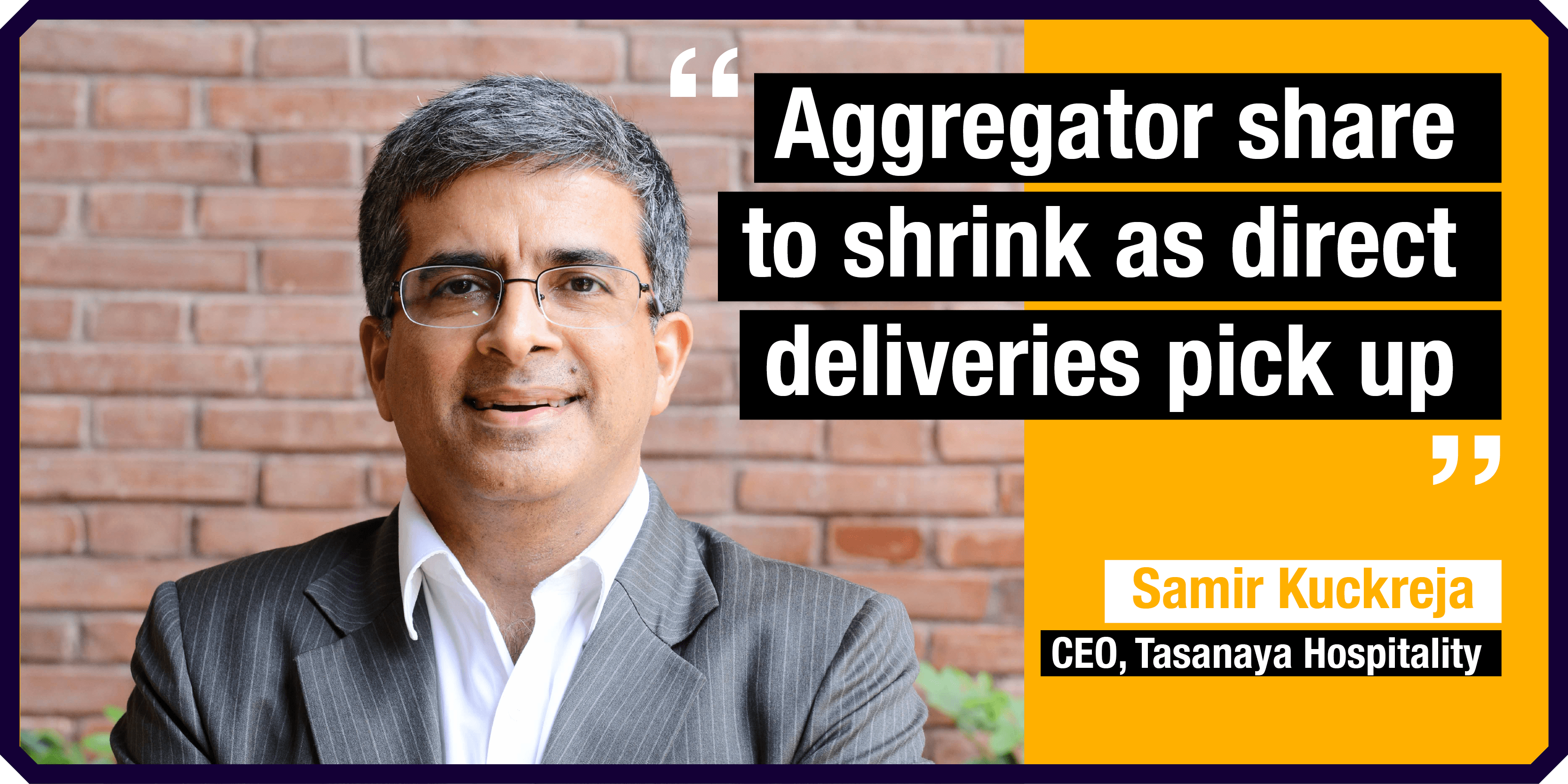Aggregator share to shrink as direct deliveries pick up
Aggregator share to shrink as direct deliveries pick up

The India Foodservice Delivery Report 2021 predicts that the Gross Market Value of the business will grow by 2.5 times to touch Rs 93,600 crore in 2022-23. The Work From Home (WFH) culture has triggered a reverse migration to smaller cities and towns, which have become the new drivers of food deliveries, even as customers are reluctant to go back to dine-in restaurants because of Covid-19 fears. Insights offered by a deep dive into India’s food service delivery market.
THE lead author of the India Foodservice Delivery Report 2021, the first deep dive into India’s burgeoning food delivery market, predicts that the share of the big two aggregators is “going to go down as the market opens up to direct ordering”.
Samir Kuckreja, founder and CEO of the boutique consulting company, Tasanaya Hospitality, however, was quick to add that restaurants have got to be smart about direct deliveries. “They have to balance the cost of new customer acquisition with the commission payments they’d be saving if they take the direct ordering route,” Kuckreja said.
He cites the example of McDonald’s in the West and South, where it operates through its master franchisee, Westlife Restaurants. The QSR chain, which launched its food delivery service, McDelivery, at select locations in 2006, has done the math, worked on the algorithms of its app and got the logistics in place. As a result, 10-15 per cent of its food delivery business is now generated through direct orders.
The India Foodservice Delivery Report 2021 predicts that the Gross Market Value of the business will grow by 2.5 times to touch Rs 93,600 crore in 2022-23. The Work From Home (WFH) culture has triggered a reverse migration to smaller cities and towns, which have become the new drivers of food deliveries, even as customers are reluctant to go back to dine-in restaurants because of Covid-19 fears. Insights offered by a deep dive into India’s food service delivery market.
THE lead author of the India Foodservice Delivery Report 2021, the first deep dive into India’s burgeoning food delivery market, predicts that the share of the big two aggregators is “going to go down as the market opens up to direct ordering”.
Samir Kuckreja, founder and CEO of the boutique consulting company, Tasanaya Hospitality, however, was quick to add that restaurants have got to be smart about direct deliveries. “They have to balance the cost of new customer acquisition with the commission payments they’d be saving if they take the direct ordering route,” Kuckreja said.
He cites the example of McDonald’s in the West and South, where it operates through its master franchisee, Westlife Restaurants. The QSR chain, which launched its food delivery service, McDelivery, at select locations in 2006, has done the math, worked on the algorithms of its app and got the logistics in place. As a result, 10-15 per cent of its food delivery business is now generated through direct orders.
Domino’s Pizza, which started the culture of organised food delivery in the country and then tweaked its business model to roll out dine-in restaurants in Tier-II and -III cities and towns, and Pizza Hut, according to the India Foodservice Delivery Report, are also developing algorithms on their apps to “increase their visibility to customers in order to reduce customer acquisition costs and to foster sustainable business models”. The Report, though, goes on to add: “This does not mean they will eliminate their presence on aggregator platforms; rather, the two systems will coexist.”
Domino’s Pizza, which started the culture of organised food delivery in the country and then tweaked its business model to roll out dine-in restaurants in Tier-II and -III cities and towns, and Pizza Hut, according to the India Foodservice Delivery Report, are also developing algorithms on their apps to “increase their visibility to customers in order to reduce customer acquisition costs and to foster sustainable business models”. The Report, though, goes on to add: “This does not mean they will eliminate their presence on aggregator platforms; rather, the two systems will coexist.”
By Sourish Bhattacharya
Published On: 10/08/2021
At Prologic First, we go the extra mile to create innovative hospitality management software solutions – the best hotel software that will keep our clients ahead of the curve.